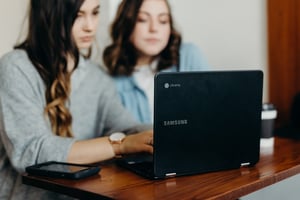Pass identity verification on the first try: insider tips
Nothing beats a good first impression. And when it comes to remote trust services, that translates into smooth, easy user registration. Simplicity has always been on ZealiD‘s priority list, defining our user journeys from start to finish. Even so, from an insider‘s perspective we see some common issues that disrupt the registration process – or halt it altogether.
What prevents our users from getting a green light on the first try? ZealiD‘s Registration and Customer Care Manager Lijana Kuodžiuvienė notes that issues on the users‘ side are systematic. What are they and how to avoid them?
We recently updated the registration steps, no longer asking users to log in to their bank for identity verification. It reduced the registration time by up to 50%, leaving the following steps in place:
- Download the ZealiD app
- Device registration with a phone number and an email address
- Liveness check with video selfie
- ID scan (ID photo + NFC scan OR video pattern)
- Manual vetting and approval (or denial)
- Signing an agreement
Here’s an overview of the most common issues that slow down identity verification:
|
Registration step |
Common issues |
|
Device registration |
Users submit an incorrect email address or phone number |
|
Liveness check (video selfie) |
|
|
ID scan |
|
|
ID filming (video pattern) |
|
Although some issues are less common than others, one thing’s clear: good preparation is the way to success.
- Use your personal device - we’ll register it as a trusted device and use it to enable your qualified certificate for every e-signature.
- Register in your personal space. Registration requires your personal data, and going through the steps in public might put it in the wrong hands.
- Since three of the steps include filming or taking photos, good lighting is essential. Ideally, complete those steps in natural lighting, and if that’s not possible, turn on a few lights to ensure good lighting from different angles.
- Use a supported document type and make sure it’s valid at the time of registration.
- Instead of holding your ID document in your hand, lay it down on a flat surface. This will give you more control and stability, ensuring that the entire surface of your document is visible.
What’s next?
Once all the steps are complete, we ask users to check and confirm their data before they submit it for a manual check. In most cases, verification takes up to 10 minutes. At this stage, the user may close the app. If notifications are turned on, we will let them know once their request is approved or if some information needs to be re-submitted. In case of success, the only thing left to do is signing an agreement. After that, the qualified electronic signature will be activated automatically.
Learn more:
Fill in the contact form below and our experts will give you a personal consultation:



